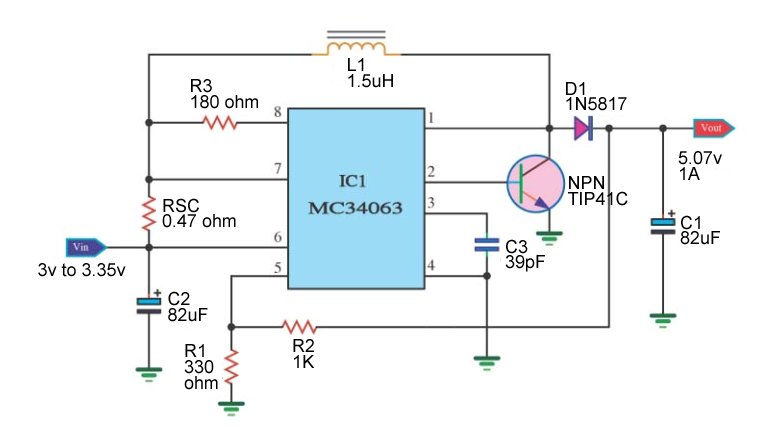
I need some help regarding the circuit I built (above). The way the circuit is built, it's supposed to output 1A @ 5v (with the peak current, Isw, being 5A). The inductor is 6.8A, the transistor (TIP41) is rated at 6A. The diode, D1, has a forward voltage of 0.475v, which is fine and has been calculated into the equation.
Anyway, my problem is this: the output voltage of the circuit measures the same as the input voltage when using the external transistor! When I reconfigure the circuit to run without the external transistor (ground IC pin 2), it outputs 5.07v (exactly how it should) but the output current can only go up to 0.3A (1.49A Isw, near the limit of the chip). So, what is the problem? Is it the transistor? Is it not turning on because the input voltage is 3v?
MC34063 Datasheet
TIP41C Datasheet









